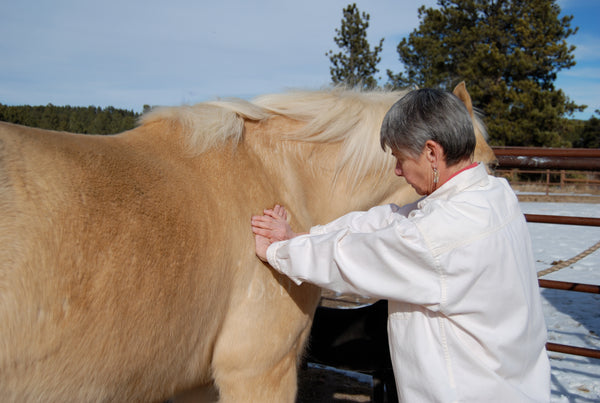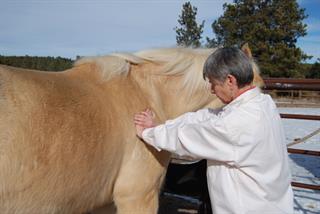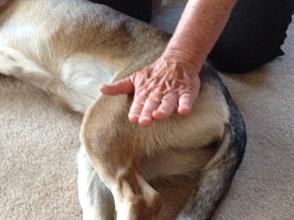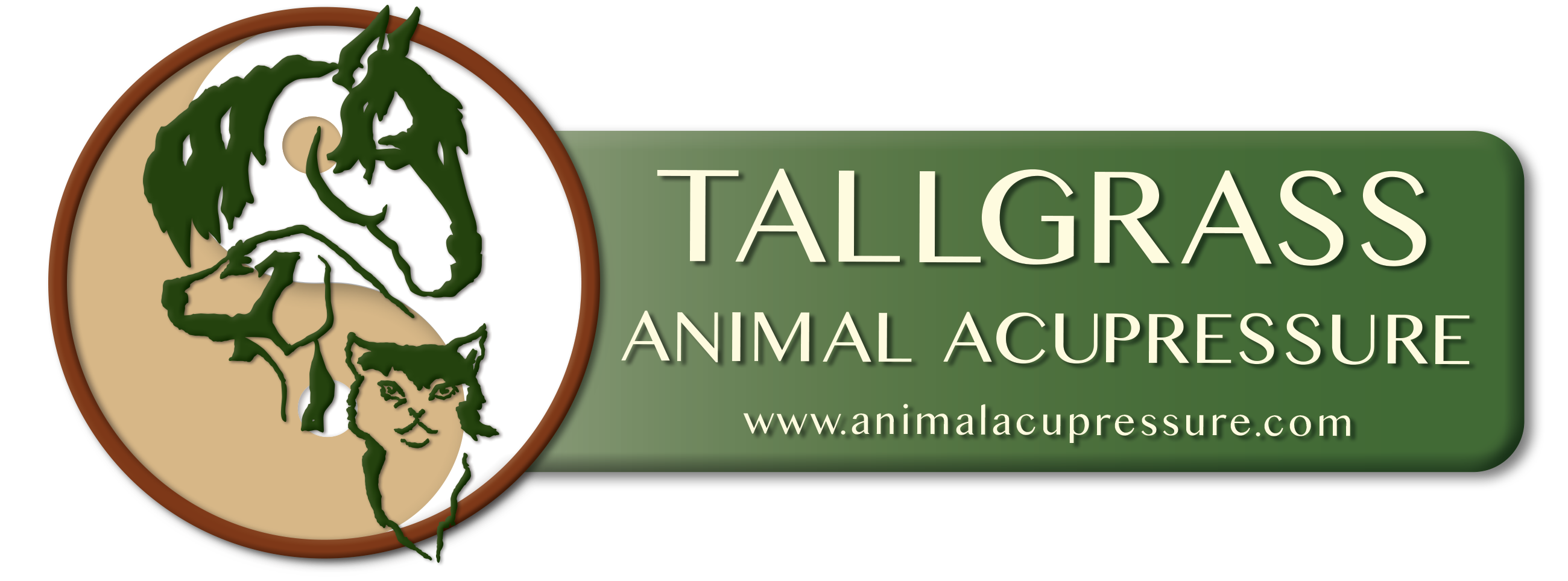
The Cold, Hard Truth About Ah-Shi Points
Part I of a Two-Part Series
Ah-Shi points are places on the body where the muscle tissue matrix tightens, becomes shorter, and thickens. When muscle tissue thickens and becomes knotted and hard, it can put pressure on nerves. In response to this pressure, nerves send pain signals. In turn, these signals cause pain that leads to restricted movement, which then compromises surrounding tissue and shuts down the flow of chi and blood to that location on the body. These points or locations can hurt a lot.
Ah-Shi points, pronounced “aah-shee,” derive their name from people saying “Aah yes” in Chinese when the practitioner touches the painful point or location. They can appear spontaneously and are not known acupressure points. These points often develop from overstressing muscles, tendons, fascia, and other soft tissue. Ah-Shi points may also form in response to injury or disease.
Have you ever noticed your horse flinch and take short steps as you lead him in from the pasture? When you went to pet your dog, has she ever pulled away and not wanted you to touch some part of her body? Has your cat bitten your hand when he didn’t want you smooth his coat? The odds are they are telling you something hurts, so the resist being touched or too much movement. This could be evidence of the animal experiencing an Ah-Shi point.

When Ah-Shi points are ignored, animals tend to compensate, which can literally set up an entire chain of pain for the animal. In the long term, at the initial site of soft tissue tightening, the Ah-Shi area can create abnormal muscular and autonomic nervous system dysfunction. This can manifest clinically as acute or chronic pain, spasm, tremor, lack of coordination, stiffness, muscle weakness, numbness, or poor circulation. These conditions can lead to muscle function impairment. Ah-Shi points are “self-sustaining” in nature and, when ignored, they can go on indefinitely and further compromise the animal’s ability to function with ease and comfort

The best way to resolve Ah-Shi points is to offer the animal acupressure-massage, known as Tui-Na in Chinese, to restore a harmonious flow of chi and blood to the affected soft tissues. The Ah-Shi location hurts. Because you don’t want to “spank the crying baby” and create more pain, start the session of working with the chi and blood away from the specific area and slowly work toward the locus of “ouch.”
It’s so interesting to see how animals respond when they realize you are doing your best to rid them of pain. Most animals will press into your hands as if to say, “Oooh, it hurts sooo good!”
Watch for Part II Coming Soon:
SOOTHING ASH-SHI POINTS WITH TUI NA
